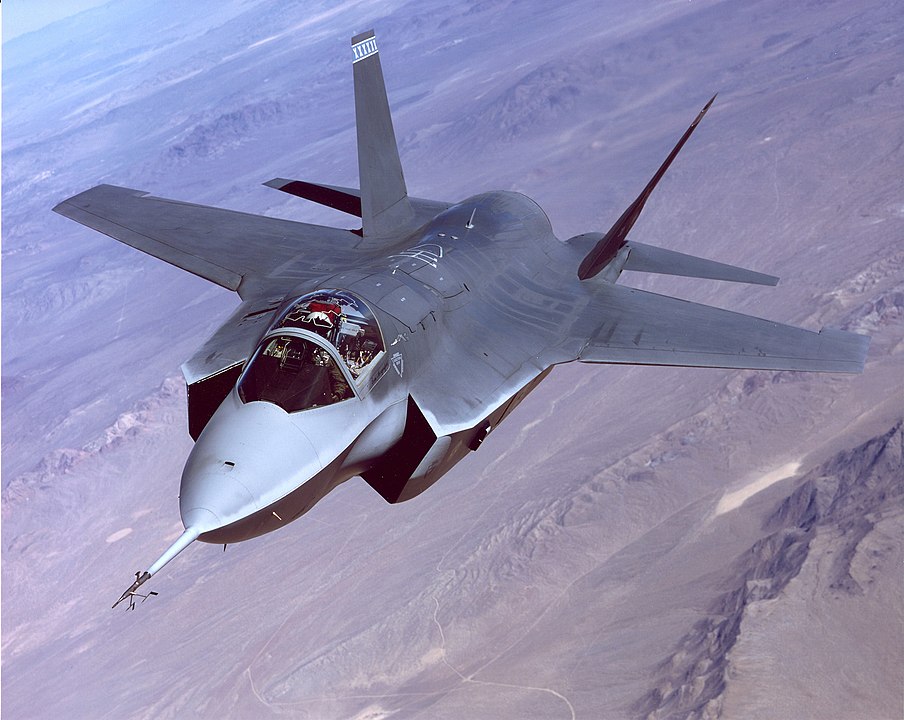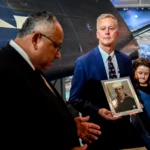“Vintage Aviation News staff did not write this article; the content comes via our partners who wish to help support our website.”
In aviation schools or universities, help with writing papers is often provided by students of these same institutions, so the topic of X-35 is worn to a frazzle. Here is an excerpt from the essays about the airplane. The X-35 was declared the winner over the competing Boeing X-32, and a developed and armed version entered production in the early 21st century as the F-35 Lightning II.
The Lockheed Martin F-35 Joint Strike Fighter has proven to be the most advanced and capable fighter aircraft in service in the world today. It was developed to replace the U.S. Air Force’s A-10 and F-16, the U.S. Navy’s F/A-18, and the U.S. Marine Corps’ F/A-18 and AV-8B Harrier.
The single-engine, single-seat aircraft is unique in that it can operate as a conventional takeoff and landing variant (F-35A) for the Air Force. At the same time, the Navy version (F-35C) was designed to operate from an aircraft carrier (CV). The U.S. Marine Corps, along with the Royal Air Force and the Royal Navy of the United Kingdom, employ the F-35B, which can operate as a short takeoff and vertical landing (STOVL) fighter. As a fifth-generation multi-role combat aircraft, the F-35 Lightning II is endowed with advanced stealth capabilities, improved agility and maneuverability, enhanced sensor and information fusion, networked operations and maintainability.
It started with the X-35: We came so close we could almost touch it.
The experimental program that preceded the Joint Strike Fighter has become “almost legendary in aviation history,” according to one aviation historian. The evolution of the F-35 can be seen at the Smithsonian’s National Air and Space Museum annex at the Steven F. Udvar-Hazy Center at Dulles International Airport.
The X-35 was declared the winner over the competing Boeing X-32 and a developed and armed version went into production in the early 21st century as the F-35 Lightning II. In September 2003, the Smithsonian Institution “jumped at the chance” to acquire one of the X-planes used during flight testing. Now, within the extensive facility’s collection is the first X-35B, the short takeoff and vertical landing (STOVL) variant that was derived from the X-35A.
The X-35B demonstrator was designed to meet the requirements of the U.S. Marine Corps and the British Royal Air Force and Royal Navy, and featured a unique shaft-driven lift fan that amplified engine thrust and reduced exhaust temperature and velocity during vertical flight operations. It allowed the aircraft to take off from a short runway or small aircraft carrier and land vertically. One of these huge lift fan propulsion systems is displayed next to the X-35B at the Steven F. Udvar Hazy Center.
Originally built as an X-35A demonstrator, it was modified to include the lift-vent engine to prove the STOVL concept. Among its many test records, this particular aircraft was the first in history to achieve a short takeoff, level supersonic flight and vertical landing in a single flight. In addition, it became the first aircraft to fly using a shaft fan propulsion system.
The X-35B flight test program was one of the shortest and most efficient in history, lasting from June 23, 2001 to August 6, 2001. During its flight test program, the X-35B successfully completed 27 vertical landings, 14 short takeoffs and 18 vertical takeoffs, was flown by four U.S. and U.K. pilots, broke the sound barrier on five separate occasions and completed five aerial refuelings.
“Vintage Aviation News staff did not write this article; the content comes via our partners who wish to help support our website.”
























